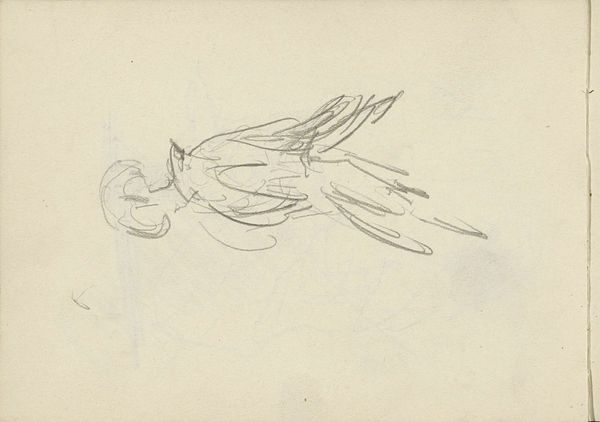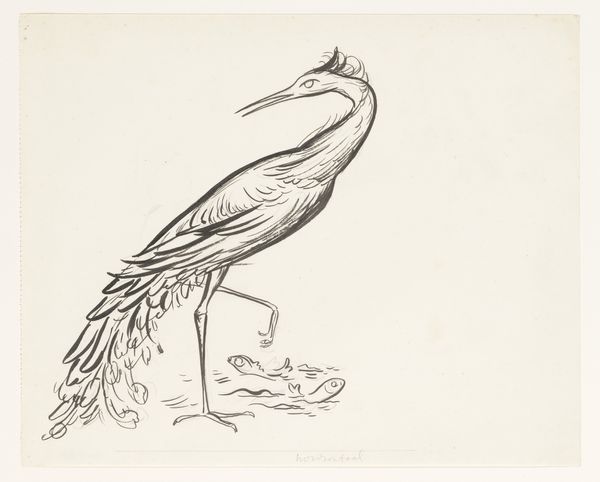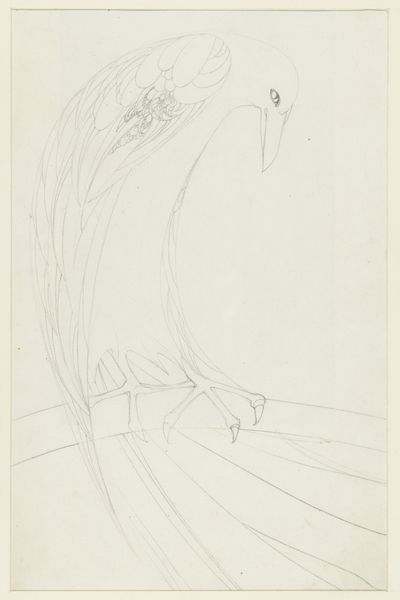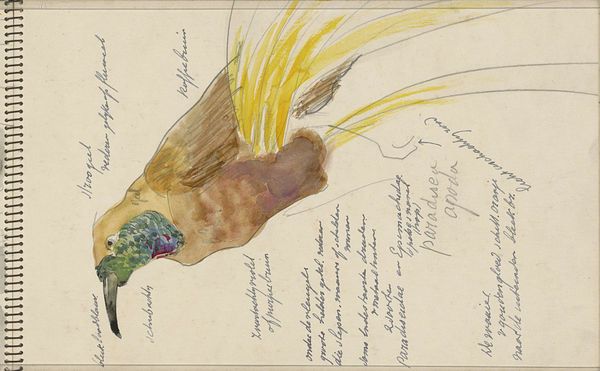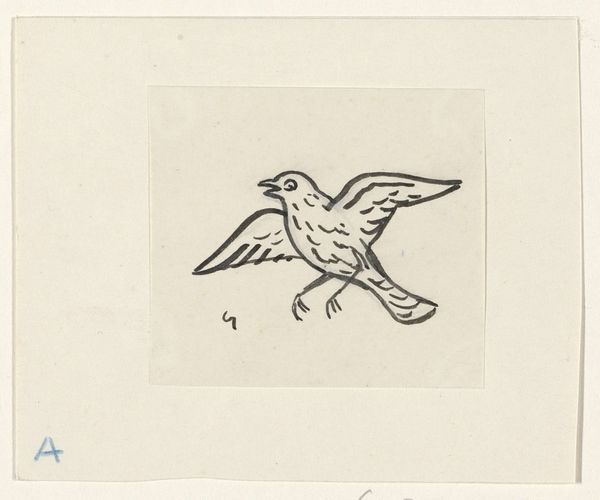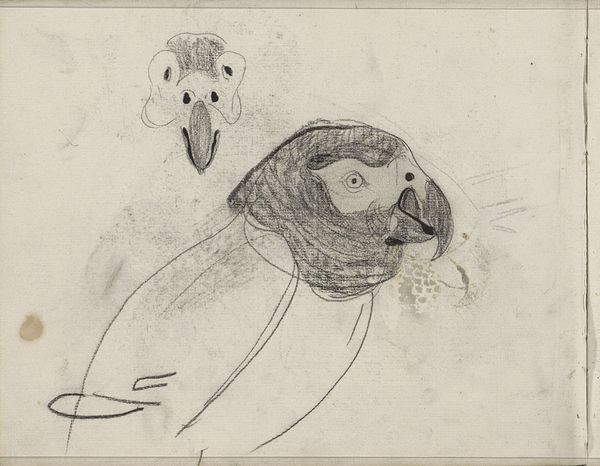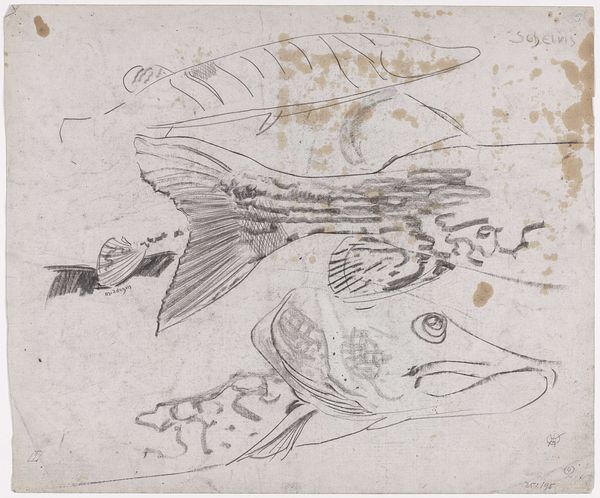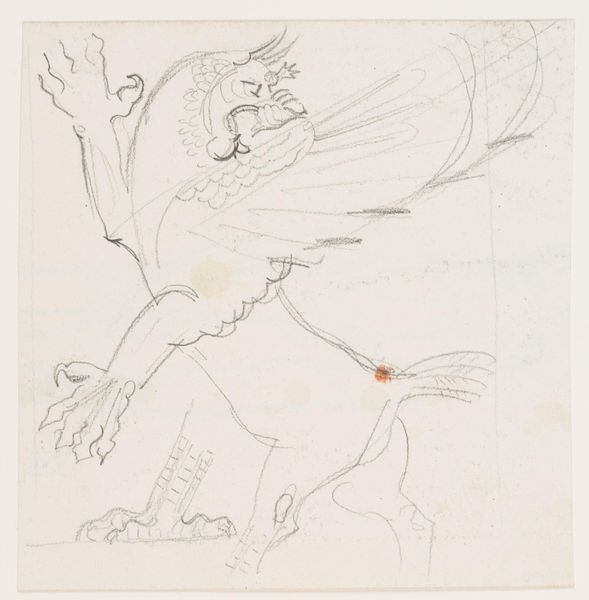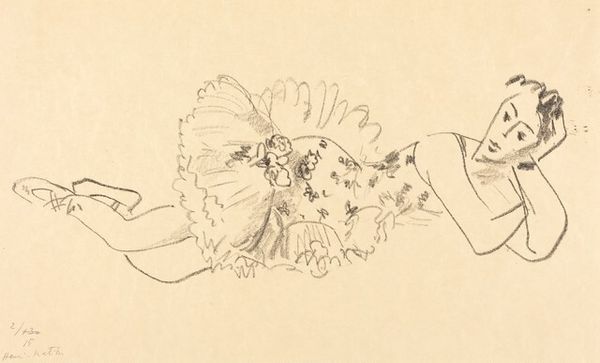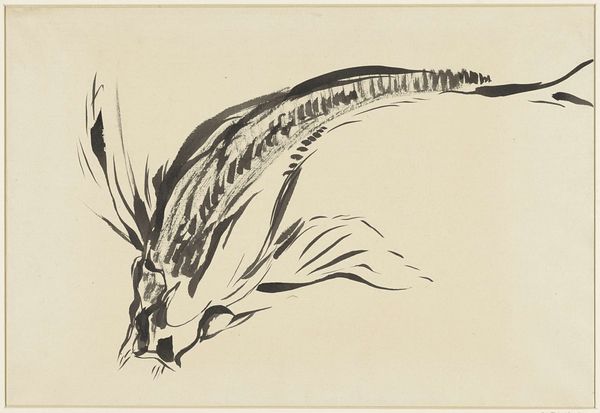
drawing, paper, ink
#
drawing
#
figuration
#
paper
#
ink
#
naturalism
Dimensions: height 206 mm, width 255 mm
Copyright: Rijks Museum: Open Domain
Curator: Look at this delicate drawing, "Paradijsvogel," or Bird of Paradise, by Carel Adolph Lion Cachet. Created sometime between 1874 and 1945, it’s an ink drawing on paper, currently held here at the Rijksmuseum. Editor: My immediate reaction is one of whimsical charm! It's not hyper-realistic, but has an almost ethereal quality. Those lines trailing from the bird’s head – they're so visually arresting. Curator: Yes, Cachet's naturalistic style truly shines here. These birds of paradise held particular significance during the late 19th and early 20th centuries, especially in the context of colonial exploration and scientific expeditions. The image circulated widely and was understood as representing the exoticism of newly encountered cultures and environments. Editor: Exactly! And considering their name, Birds of Paradise have a deeply symbolic connection to ideas of utopia, immortality, even divinity in some cultures. The lightness of the drawing, the simplicity of the lines, really allows that symbolic weight to come through. I wonder what its role was? Was this just a sketch for something else? Curator: The question of function is key here! Cachet was deeply embedded in the artistic networks and the intellectual milieu of his time. These naturalistic studies are actually a window onto a colonial gaze – the artist attempts to capture and possess these “exotic” specimens. These drawings were often commissioned or circulated among the elite. Editor: That’s an important counterpoint – what looks delicate and charming at first glance also hints at how Western culture framed, and maybe even commodified, the natural world. It reveals a cultural fascination, tinged with a sense of ownership. Curator: Absolutely. The politics of display come into play. How objects are positioned and contextualized says everything. We learn much more about society's values, desires and power dynamics through artistic artifacts such as these. Editor: Examining visual culture like this reminds me how images, even seemingly innocent ones, are embedded with cultural significance. Curator: A great illustration that beauty often hides complex narratives about us.
Comments
No comments
Be the first to comment and join the conversation on the ultimate creative platform.
